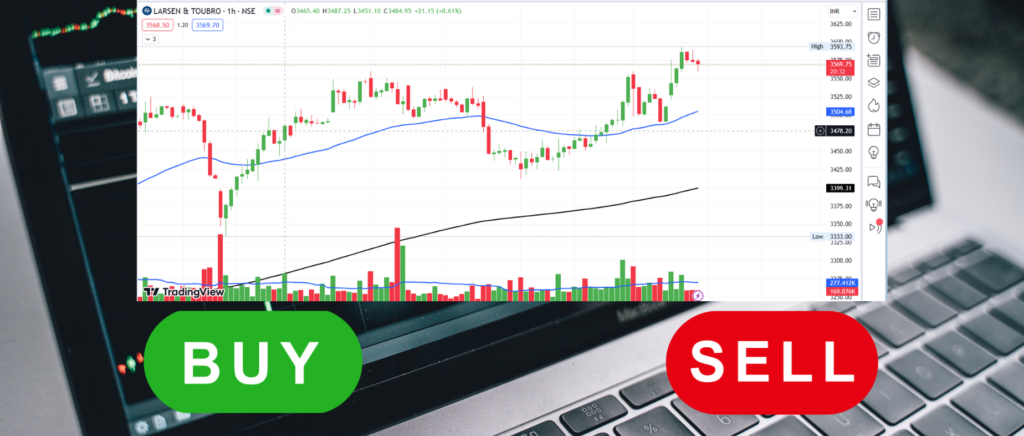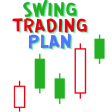Table of Contents
Introduction
Swing trading, a popular trading approach, involves capturing price “swings” within an established trend. It offers a middle ground between the rapid pace of day trading and the long-term commitment of traditional investing. To excel in this, one must adeptly choose the best stocks for swing trading that align with the strategy’s principles.

Understanding Swing Trading
Before selecting the best stocks for swing trading, it’s crucial to understand the fundamentals of swing trading. Unlike day trading, where positions are closed before the market closes, swing traders hold onto positions for a few days to weeks, aiming to profit from short-term market movements. The strategy requires a keen eye for technical and fundamental analysis.
Key Criteria for Selecting The Best Stocks for Swing Trading
Successful swing trading begins with a meticulous selection process. Three key criteria play a pivotal role in identifying the best stocks for swing trading:
Volatility and Liquidity
Swing traders thrive on volatility, as it creates opportunities for substantial price movements. However, pairing volatility with liquidity is essential to ensure smooth entry and exit from trades. Highly liquid stocks allow traders to execute orders without significantly impacting the stock’s price.
Fundamental Analysis
While swing trading is often associated with technical analysis, understanding a company’s fundamentals is equally important. Examining financial statements, evaluating earnings reports, and assessing the overall health of a business provide valuable insights into a stock’s potential for swing trading.
Technical Analysis
Technical analysis involves studying price charts and using various indicators to forecast future price movements. Traders often rely on moving averages, trendlines, and oscillators like the Relative Strength Index (RSI) to make informed decisions. Integrating technical analysis into stock selection enhances the probability of successful swing trades.
Top Industries for Swing Trading
Certain industries are more conducive to swing trading due to their inherent characteristics. Let’s explore some sectors that often present promising opportunities for swing traders.
Information Technology
The dynamic nature of the technology sector provides ample opportunities for swing traders. Stocks of innovative companies with significant growth potential can experience rapid price swings, creating ideal conditions for profitable trades.
Biotechnology
Biotech stocks are known for their volatility, driven by developments in drug trials, regulatory approvals, and market sentiment. Swing traders can capitalize on these fluctuations, provided they stay informed about industry developments.
Energy
Energy stocks, influenced by factors like geopolitical events and commodity prices, offer favorable conditions for swing trading. Traders can leverage short to medium-term trends in oil and gas stocks.
Identifying Promising Stocks
Once the preferred industries are identified, the next step is to pinpoint individual stocks with high potential for swing trading success.

Above image is the stock chart of Larsen and Toubro. Source: Tradingview charting software.
Using Financial Ratios
Examining financial ratios, such as price-to-earnings (P/E) and debt-to-equity, helps assess a company’s financial health. Stocks with solid fundamentals are more likely to withstand market fluctuations.
Analyzing Historical Performance
Reviewing a stock’s historical performance provides insights into its price movements during different market conditions. Understanding past trends aids in predicting potential future swings.
Monitoring Market Trends
Staying attuned to broader market trends is crucial for swing traders. Factors like overall market sentiment, economic indicators, and geopolitical events can impact stock prices and should be considered when selecting the best stocks for swing trading.
Proper Risk Management Strategies While Selecting The Best Stocks For Swing Trading
While the allure of high returns is inherent in swing trading, effective risk management is paramount to long-term success.
Importance of Risk Management in Swing Trading
Swing traders must set clear risk parameters for each trade. This involves determining the acceptable percentage of capital at risk and setting stop-loss orders to limit potential losses.
Setting Stop-Loss Orders
A stop-loss order is a predetermined point at which a trader will exit a losing position. Implementing stop-loss orders ensures that losses are contained, preventing significant portfolio erosion.
Popular Tools and Indicators for Swing Traders
As written in my earlier blog post, to navigate the complexities of swing trading, traders often rely on specific tools and indicators. Here are the technical indicators which can be used while choosing the best stocks for swing trading.
Moving Averages
Moving averages smooth out price data to identify trends over a specified period. The crossover of short-term and long-term moving averages can signal potential entry or exit points for swing trades.
Relative Strength Index (RSI)
The pace and variation of price fluctuations are measured by the RSI. An overbought condition is indicated by an RSI above 70, while an oversold condition is indicated by an RSI below 30. Swing traders use RSI levels to gauge potential reversals.
Bollinger Bands
Bollinger Bands help identify volatility and overbought or oversold conditions. Traders observe price movements relative to the bands to anticipate potential trend reversals.
Case Studies: Successful Swing Trading Stories
Real-life examples of successful swing trades provide valuable insights into the strategies and decision-making processes that contribute to profitable outcomes.
Examining Real-life Examples
Case Study 1: XYZ Technology Corp
XYZ Technology Corp, a leading tech company, experienced a significant price dip due to temporary market concerns. A swing trader recognized the stock’s solid fundamentals and seized the opportunity, resulting in a profitable swing trade as the stock rebounded.
Case Study 2: Biotech Innovations Ltd
Biotech Innovations Ltd announced positive results from a clinical trial, leading to a surge in its stock price. A swing trader who closely monitored industry developments capitalized on this news, executing a timely trade for substantial gains.
Lessons Learned from These Cases
These case studies highlight the importance of staying informed, conducting thorough research, and being agile in executing trades. Successful swing traders combine analytical skills with a proactive approach to capitalize on market opportunities.
Common Mistakes to Avoid
While swing trading can be rewarding, certain pitfalls should be avoided to enhance long-term success.
Overlooking Market Trends
Failing to recognize broader market trends can lead to poor decision-making. Swing traders must stay updated to economic indicators and overall market sentiment to make informed choices.
Ignoring Risk Factors
Overconfidence and neglecting risk factors can result in significant losses. It’s crucial for swing traders to acknowledge and manage risks effectively to safeguard their portfolios.
Impatience in Holding Positions
Swing trading requires patience to allow trends to develop. Impulsive decision-making, such as prematurely exiting a trade, can undermine the potential for profits.
Building a Diversified Swing Trading Portfolio
Diversification is a key strategy in mitigating risk and maximizing opportunities.
Balancing Stocks from Different Sectors
A well-rounded swing trading portfolio includes stocks from various sectors. This diversification minimizes the impact of adverse events affecting a specific industry.
Importance of Diversification in Risk Management
Diversifying across industries and market caps contributes to a balanced portfolio. By spreading risk, swing traders can better withstand adverse market conditions and capitalize on diverse opportunities.
Economic Indicators and Swing Trading
Understanding the impact of economic indicators on stock prices enhances a swing trader’s ability to make informed decisions.
Understanding Economic Indicator’s Impact on Stocks
Economic indicators, such as employment data, interest rates, and GDP growth, influence market sentiment and stock prices. Swing traders should incorporate these factors into their analysis for a comprehensive view of potential market movements.
Incorporating Economic Data into Swing Trading Strategies
Adapting trading strategies based on economic indicators ensures that swing traders are well-prepared for changing market conditions. Being responsive to economic data can provide a competitive edge in executing successful trades.
Adapting to Market Conditions
Successful swing traders are adaptable, adjusting their strategies based on prevailing market conditions.

Strategies for Bullish and Bearish Markets
In bullish markets, swing traders may focus on buying opportunities, riding the upward momentum. In bearish markets, short-selling or holding defensive positions becomes crucial for preserving capital.
Flexibility in Approach Based on Changing Conditions
Market conditions are dynamic, and swing traders must be flexible in their approach. Adapting to evolving trends and adjusting strategies accordingly is key to sustained success.
Continuous Learning and Improvement
The world of swing trading is ever-evolving, requiring a commitment to continuous learning.
Staying Updated on Market News
Keeping abreast of market news, industry updates, and economic developments is essential for making informed decisions. Swing traders should allocate time for ongoing education to refine their skills.
The Role of Ongoing Education in Successful Swing Trading
Investing in one’s knowledge and skills pays dividends in the world of swing trading. Attending workshops, reading market analyses, and participating in trading communities contribute to continuous improvement.
Tips for Beginners
For those new to swing trading, a few essential tips can set the foundation for a successful journey.
Starting with a Small Portfolio
Beginners should start with a small portfolio to gain experience without exposing themselves to significant risk. As confidence and skill grow, portfolios can be expanded.
Seeking Guidance from Experienced Traders
Learning from experienced swing traders provides invaluable insights. Joining trading communities, attending webinars, and seeking mentorship can accelerate the learning curve for beginners.
Conclusion
Swing trading, with its dynamic nature and potential for substantial gains, is an appealing strategy for traders. Selecting the best stocks for swing trading involves a meticulous process of analysis, risk management, and continuous learning. By understanding market trends, incorporating technical and fundamental analysis, and adapting to changing conditions, swing traders can enhance their chances of success.
5 Unique FAQs
- Q: Is swing trading suitable for beginners?
- A: While swing trading can be rewarding, beginners should start with caution, begin with a small portfolio, and seek guidance from experienced traders.
- Q: How often should I review my swing trading portfolio?
- A: Regularly reviewing your portfolio is essential. Consider quarterly assessments and adjust your strategy based on changing market conditions.
- Q: What role does economic data play in swing trading?
- A: Economic indicators influence market sentiment and stock prices. Swing traders should incorporate this data into their analysis for a comprehensive view.
- Q: Are there specific tools for identifying swing trading opportunities?
- A: Yes, tools like moving averages, RSI, and Bollinger Bands are popular among swing traders for identifying potential entry and exit points.
- Q: How do I avoid common mistakes in swing trading?
- A: Avoid common pitfalls by staying informed about market trends, managing risks effectively, and exercising patience in holding positions.






